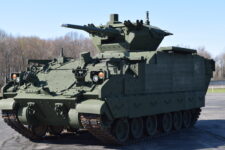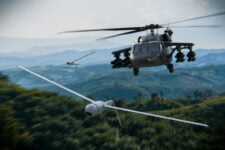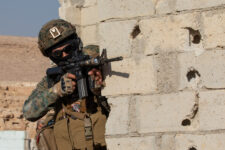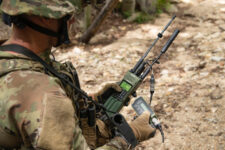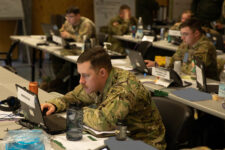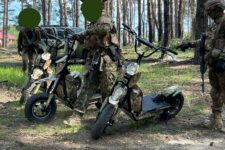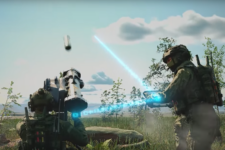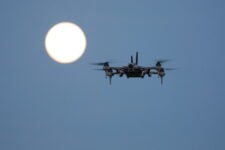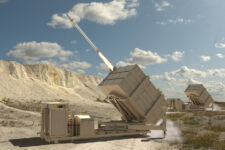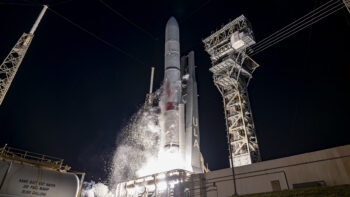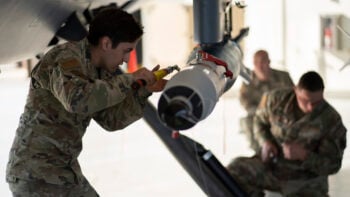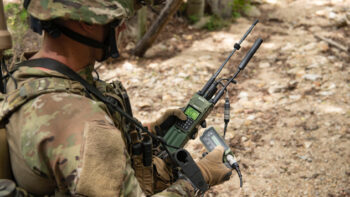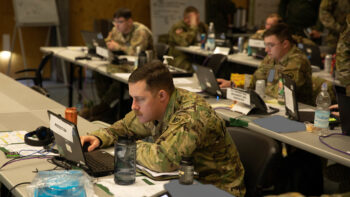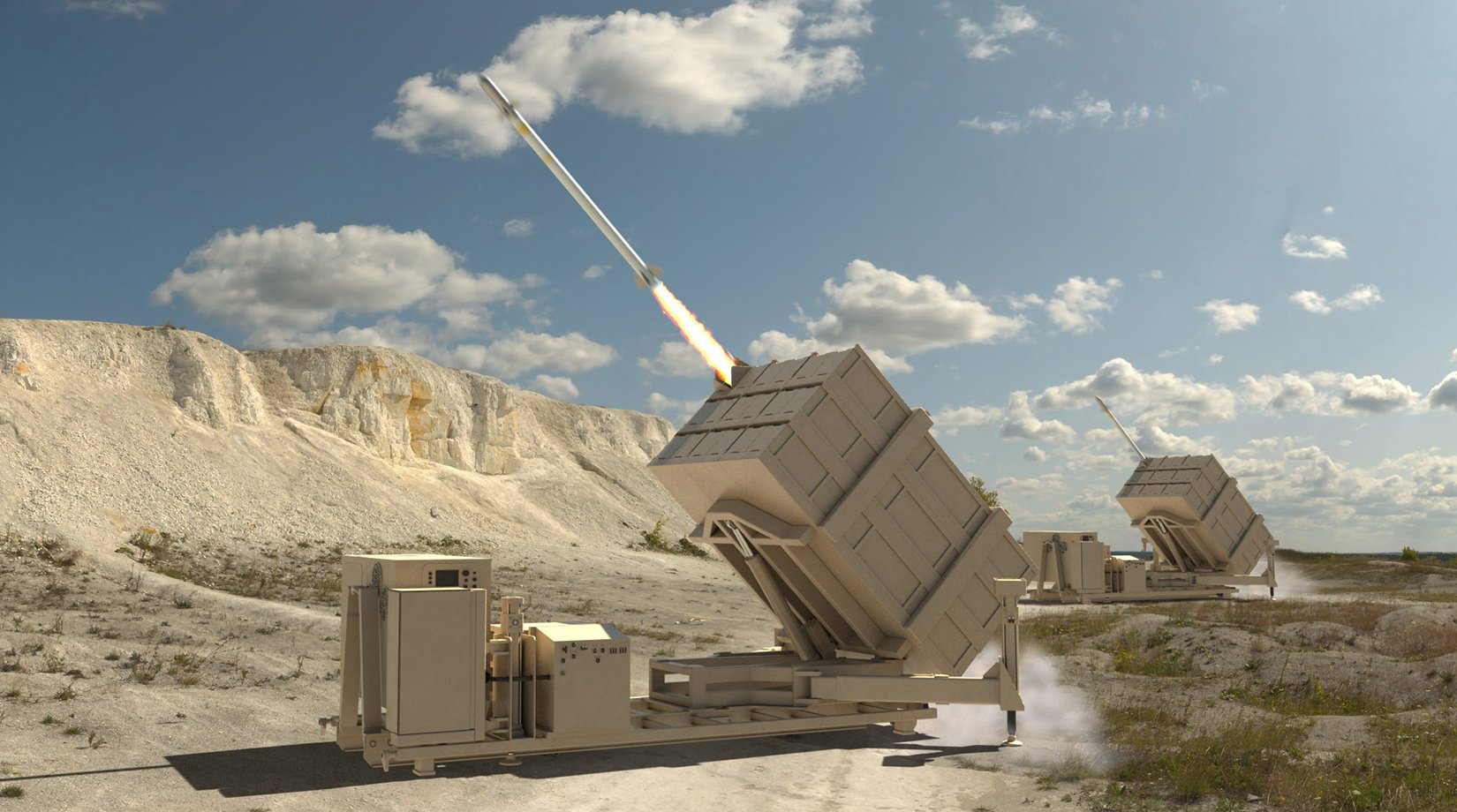
Dynetics won a prototype contract to produce the Army’s Indirect Fire Protection Capability. (Dynetics)
EUROSATORY 2024 — After scouring the market for existing options, the US Army is leaning towards developing a new, second interceptor for its Indirect Fire Protection Capability Increment 2 (IFPC Inc 2) program, according to Brig. Gen. Frank Lozano.
“Of all the companies I’ve interacted with, it’s about eight or nine, nobody has an off-the shelf-capability ready to go,” Lozano, the service’s Program Executive Officer for Missiles and Space, told Breaking Defense on the floor of the Eurosatory exposition here in Paris where defense firms from around the world are showing off their wares, including full-scale models of available missiles.
The hunt for a second interceptor follows a 2021 Army IFPC Inc 2 contract award to a Dynetics-RTX team for a developmental launcher dubbed Enduring Shield, paired with a ground-launched AIM-9X Sidewinder. It is now clearer that the service needs a second interceptor that is “more capable” against lower flying, supersonic cruise missiles, the one-star general explained.
The Army requested funds to acquire a new interceptor in its latest budget request, but after publishing a request for information earlier this year and engaging with industry, Lozano said the service is prepared to embark on a five-year development effort that could have a new weapon in soldiers’ hands early next decade.
He explained that while the Norwegian Advanced Surface to Air Missile System (NASAMS) could help fill that capability gap with the AIM-120D Advanced Medium Range Air-to-Air Missile, ultimately that’s not an option since the system has a magazine depth of six rounds. The cost of supporting a foreign system that the US does not hold intellectual property rights to, he added, is also a hindrance.
Instead, the Army is envisioning an AIM-120D-like capability but with smaller rounds that fit inside an IFPC Inc 2 launcher holding 18 interceptors.
“So, we’re looking at the miniaturization of a rocket motor and we’re looking at the miniaturization of a flight guidance section of the missile midsection and we’re looking at the miniaturization of improved seeker capability,” he said today.
Should the Army pursue a new interceptor, Lozano said he anticipates development continuing though the 2029 to 2030 timeframe before low-rate initial production begins.
One remaining question mark, he added, is whether the second interceptor will be the only one the Army needs or if it will need to provide soldiers with a mix of the new one and the AIM-9X.
“When I develop that [new] capability, I don’t know if it will be able to service that threat and the others,” the one-star general explained.
“In a perfect world, I’d love to have all second interceptors able to address all threats, that’s what we’re asking for,” he added. “But if it can’t take out the group three [drones], if it can’t take out the supersonics, if it can’t take out the large caliber rockets, then I’ll likely need a mix load.”
